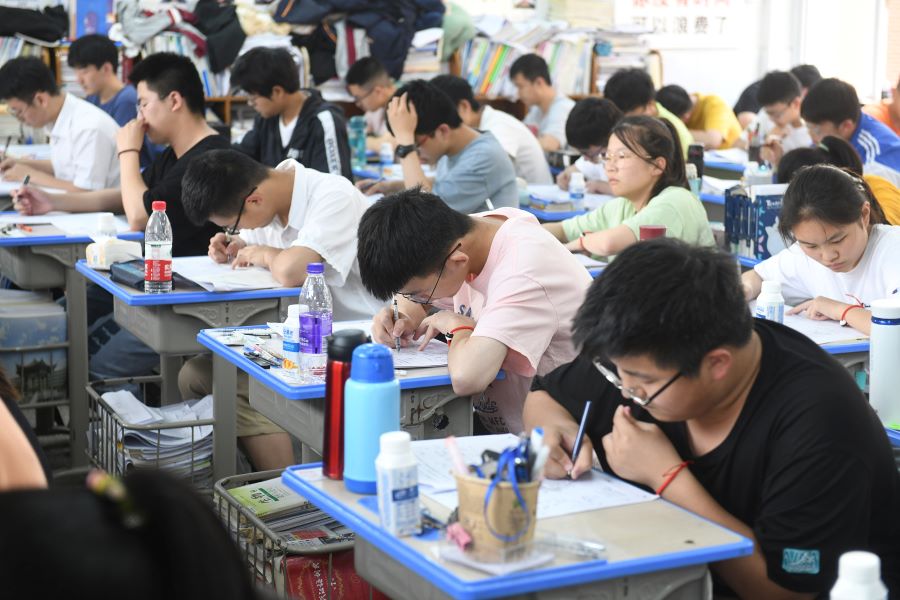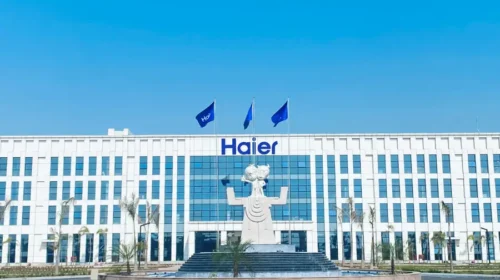School Operator Hailiang Expands Franchise Model with Private Sector Tie-Up

Deal will see company take over management of two privately owned schools for the first time
Key points:
- Hailiang has expanded its franchise-style business model with a new agreement to take over two privately owned schools in Shandong province
- The company is unlikely to be affected by the crackdown on private educators due to its focus on primary rather than extracurricular learning
By Doug Young
As a Sept. 1 “day of reckoning” fast approaches for China’s new generation of private education companies, one name that appears to be positioned above the fray is the older and more traditional Hailiang Education Group (HLG.US).
The company is fast emerging as a sort of “Marriott” of the Chinese education realm, expanding from its original model of owning and operating traditional schools in eastern Zhejiang province to becoming a manager of schools for others. Its latest announcement last week marks a new step in that direction, with the company unveiling its first deal to manage a couple of privately owned schools in northeast China’s Shandong province.
This move extends Hailiang’s relatively recent expansion that has seen it take over operation of schools outside its home province in partnerships with local governments.
This kind of asset-light model could position the company for solid growth in the years ahead, as China doesn’t really have too many of this kind of private franchise-style operator of traditional elementary, middle and high schools. What’s more, Chinese parents are more than willing to fork out big money for their children’s education, meaning Hailiang could profit handsomely if it can position itself as a premier brand in the space.
The company’s latest expansion comes against a broader backdrop of a major storm brewing in China’s private education sector. But that storm is largely focused on a newer generation of companies offering online after-school tutoring services. Worried that such courses are stressing out Chinese students too much, Beijing has taken a number of steps to rein in the group by limiting times they can operate and also closing down smaller, less-well-run operators.
As an older operator of traditional elementary and middle schools, Hailiang doesn’t appears to be among the group set for a clampdown starting Sept. 1. That date is being seen as a sort of day of “reckoning day” for after-school online tutoring companies, since that’s when they will be required to get government permits for the first time to continue operating.
As a veteran in the space and a company that works closely with other local governments, Hailiang obviously already has the permits it needs to legally operate in the sensitive space. But we should point out its recently launched and fast-growing after-school online tutoring business could put the company at future risk.
What’s more, the public listing of private educators has always been controversial because it often causes companies to think about profits over what’s best for students. That’s why there are few companies comparable to Hailiang in the west, and why the company needs to be careful to emphasize its most important mission is its students’ education and not maximizing profits.
The company’s position as a traditional education provider has helped to shield its stock somewhat from a massive selloff that has affected many of China’s other publicly traded education companies this year. Its shares are down by about a third year-to-date, which is far better than most online education specialists whose stocks have lost anywhere from half to two-thirds of their value.
Shandong Deal
All that said, we’ll zoom in next on the latest wrinkle of Hailiang’s evolving business model as it expands its management services for third-party school owners. Then we’ll close with a look at the company’s bigger financial picture and its valuation, which really looks quite low, perhaps because it’s getting dragged down by all the recent education controversy.
Under the company’s latest deal announced last Thursday, it will manage two private schools in the Shandong city of Yantai built and owned by the conglomerate Nanshan Group. The pair of schools have combined enrollment of 4,000 students, which would boost Hailiang’s latest total student count by about 5.4%.
“We will leverage our asset-light operation management model to export high-quality school operation experience, capability and educational resources, expand our school network and provide high-quality K-12 education services to more students,” said Chen Junwei, who was named as the company’s new chairman last year.
The shift to this sort of a franchise-style education model has been in the works for the last couple of years under the company’s previous Chairman Wang Ming. Hailiang has announced a steady string of agreements with local governments over the last two years to operate schools throughout China, from Shandong in the northeast, to Shaanxi and Gansu provinces in the west.
The company’s latest financial results show it had 41 schools as of the end of March, 13 directly owned and 28 managed on behalf of third-party owners. Those numbers were up from 9 directly owned and 27 managed schools in June 2019, showing the company is growing but not at a huge clip over the last two years.
Hailiang announced last September that its total enrollment in the current school year was 72,839 students, up 9.5% from the previous year, which included the addition of three new schools.
The company’s latest results show its revenue and profit grew 45.7% and 67.2%, respectively, in the three months to March, reaching 434.8 million yuan ($67 million) and 100 million yuan. For the nine months through March, it reported smaller but still healthy gains of 31% for revenue and 39% for profit.
Notably, the company’s revenue from its new online training services rose more than tenfold in its latest quarter to account for about 10% of its total. While it’s good to see that kind of new fast-growing business, we should also note this is the area that’s currently the subject of the government crackdown and thus could be a source of future risk.
All that brings us to valuation, with Hailiang’s currently price-to-earnings ratio (PE) now at a relatively modest 15. By comparison, vocational schools operator China East Education, which is also relatively safe from the ongoing crackdown, trades at a PE of 69 based on its 2020 profit and 21 based on its pre-pandemic profit in 2019. New Oriental, which mostly operates extracurricular classes in traditional classrooms, also has a higher PE of 25, even after the company’s shares have lost about two-thirds of their value this year.
To subscribe to Bamboo Works weekly newsletter, click here






